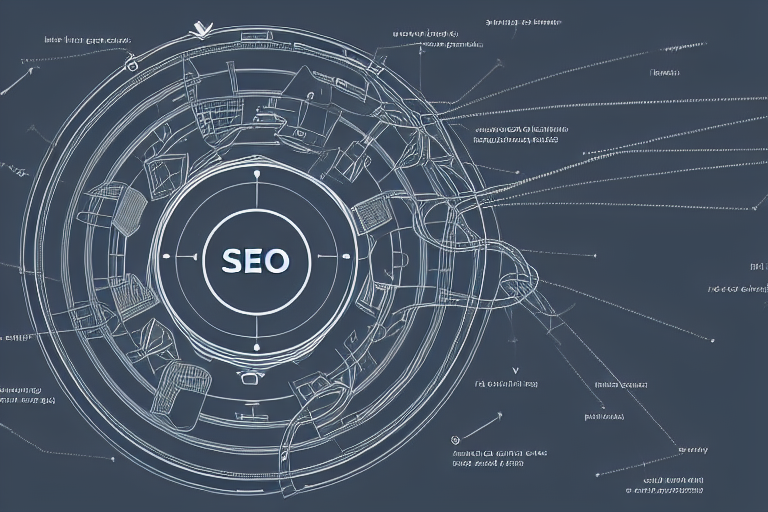How to Make SEO Traffic Convert?

Are you looking for ways to improve your website's traffic? If so, you're not alone. Many businesses invest time and money into search engine optimization (SEO) in order to attract more visitors to their site.
However, simply increasing your website's traffic is not enough. You also need to focus on conversion rate optimization (CRO) in order to convert those visitors into leads and customers.
In this blog post, we'll share some tips on how to make your SEO traffic convert. We'll cover the importance of SEO traffic, how to optimize your site for it, and how to convert that traffic into leads and customers. By following these tips, you can maximize the return on investment for your SEO efforts.
The Importance of SEO Traffic.
Organic search engine traffic can provide a number of benefits for businesses, including increased website visitors, higher quality leads, and improved ROI.
Some of the specific benefits that businesses may experience by optimizing their site for SEO include:
• Increased Website Traffic: One of the most obvious benefits of SEO is that it can lead to increased website traffic. By improving your ranking in search engine results pages (SERPs), you can dramatically increase the number of people who visit your site.
• Higher Quality Leads: Not all website visitors are created equal. Some visitors will be more likely to buy your product or use your services than others. However, organic SEO traffic is generally quite high quality since users have taken the time to search for your specific keywords and click on your link.
• Improved ROI: Since SEO can lead to increased website traffic and higher quality leads, it stands to reason that it can also result in improved ROI for your business. In fact, businesses that invest in SEO tend to see 2.5 times more ROI than businesses that don’t bother with optimization
The Risks of Not Optimizing for SEO
Of course, there are also risks associated with not optimizing your website for SEO. These risks include:
• Lower Rankings and less visibility: If you don’t take steps to improve your ranking in SERPs, you’ll likely find yourself buried down on page 10 or 20 where few people will ever see your listing.
• Decreased Website Traffic: As a result of lower rankings, you may also experience decreased website traffic as potential customers click on links from other websites instead of yours.
• Missed Opportunities: By not optimizing for SEO, you could be missing out on opportunities to drive significant amounts of targeted traffic to your website.
As you can see, there are both risks and rewards associated with SEO traffic. However, the benefits of optimization typically outweigh the risks for most businesses.
How to Optimize for SEO Traffic.
On-page SEO is the practice of optimizing a website for Google search with the goal of earning higher web traffic levels and improving the visibility of the site. The main aim of on-page SEO is to tell Google what your website is about so that it can rank your pages appropriately in the search engine results pages (SERPs).
There are a number of different tactics you can use to optimize your website for on-page SEO, but some of the most important ones include:
1. Optimizing your title tags and meta descriptions.
2. Creating keyword-rich content.
3. Using internal linking to improve the flow of link equity through your website.
4. Optimizing your images and other media files for both search engines and users.
5. Making sure your website is mobile-friendly and responsive.
6. Ensuring your website loads quickly by using caching and file compression techniques where possible. Good website hosting is also important to have a low TTFB (time to first byte)
7. Implementing security features like SSL certificates to earn trust signals from Google.
8. Creating an XML sitemap to help Google index all of your website’s pages correctly.
You can also follow that checklist to optimize your blog posts.

Off-Page SEO Tactics
Off-page SEO is the practice of optimizing a website for Google search by building external signals that show Google that your site is authoritative and trustworthy. The goal of off-page SEO is similar to on-page SEO - to earn higher web traffic levels and improve the visibility of the site in SERPs - but it differs in that it relies on factors outside of your control to achieve this goal.
Some common off-page SEO tactics include:
1) Guest blogging on high quality websites in order to build backlinks to your own site.
2) Participating in online forums and discussions in order to build relationships with potential customers and create brand awareness
3) Creating informative infographics or other types of shareable content that can be published on other websites
4) Submitting press releases or articles to news sites
5) Claiming local business listings and directory listings
6) Doing social media marketing
7) Earning customer testimonials and reviews
8) Participating in online Q&As like Quora or Yahoo! Answers.
Technical SEO Tactics
Technical SEO is the practice of optimizing a website for Google search by making sure that the site is crawlable and indexable by the search engine. The goal of technical SEO is to ensure that Google can find and understand your website so that it can rank your pages appropriately in the SERPs.
Some common technical SEO tactics include:
1) Optimizing your website’s robots.txt file to control which pages Google crawls and indexes.
2) Creating an XML sitemap to help Google index all of your website’s pages correctly.
3) Using canonical tags to avoid duplicate content issues.
4) Ensuring your website loads quickly by using caching and file compression techniques where possible.
5) Making sure your website is mobile-friendly and responsive.
6) Implementing security features like SSL certificates to earn trust signals from Google.
How to Convert SEO Traffic.
The first step to converting SEO traffic is to create a compelling offer. This could be in the form of a discount, a free trial, or something else that would entice potential customers. Once you have an offer, make sure it is prominently featured on your website so that visitors can't miss it.
Creating an Engaging Landing Page
In order for your offer to be successful, you need to create an engaging landing page. This page should clearly state what the offer is and how the visitor can take advantage of it.
It should also include a strong call-to-action so that visitors know what to do next. Be sure to test different versions of your landing page so that you can optimize it for conversion rate.
Leverage affiliate programs
Affiliate programs are a great way to monetize your SEO traffic. If you have posts with traffic in a given niche, then promoting affiliate offers related to that niche is an easy and effective conversion tactic.
If you have your own product, you can either promote your own product or get complimentary $$ by promoting products adjacent to yours when it's relevant. Usually, this will bring you more money than simply displaying generic ads from an advertising platform.
If you do not have your own affiliate program, this is also a reminder that it could be a great idea to create your own affiliate program and leverage other websites' SEO traffic for your own product.
Nurturing Leads with Email Marketing
Once you have captured leads with your offer, it's important to nurture them with email marketing. Send them timely emails with helpful information about your product or service and how it can benefit them. You can also use email marketing to upsell or cross-sell related products and services.
Use website visitor identification
Website visitor identification is the process of mapping anonymous visitors of your website to B2B companies (& people). Once recognized, you can engage a sales process towards these companies as you know they had an interest and are likely to be easier to convert.
Get help
And if all that is outside of your core competencies, don't hesitate to seek help. Getting an SEO mentor on mentoring platforms such as Mentorcruise for a few hours/month can be a huge help in designing the right strategy.
As you've noticed, the main theme here is to use your content to attract people and then sell them on something else. It's usually much more lucrative to do that than trying to monetize the content directly through paywalls etc. unless you have massive traffic (which, if we're being honest, is unlikely to be the case if you're here reading this)
Final thoughts
If you want your business to succeed online, it's essential to invest in SEO and make sure your site is optimized for search engine traffic. However, simply getting traffic from Google isn't enough – you need to convert that traffic into leads and customers. Fortunately, there are a few key things you can do to improve your conversion rate.
First, focus on creating a compelling offer that will attract the right kind of attention. Secondly, make sure your landing page is engaging and easy to navigate. Finally, don't forget to nurture your leads with targeted email marketing campaigns. By following these tips, you can ensure that more of your SEO traffic converts into paying customers.
